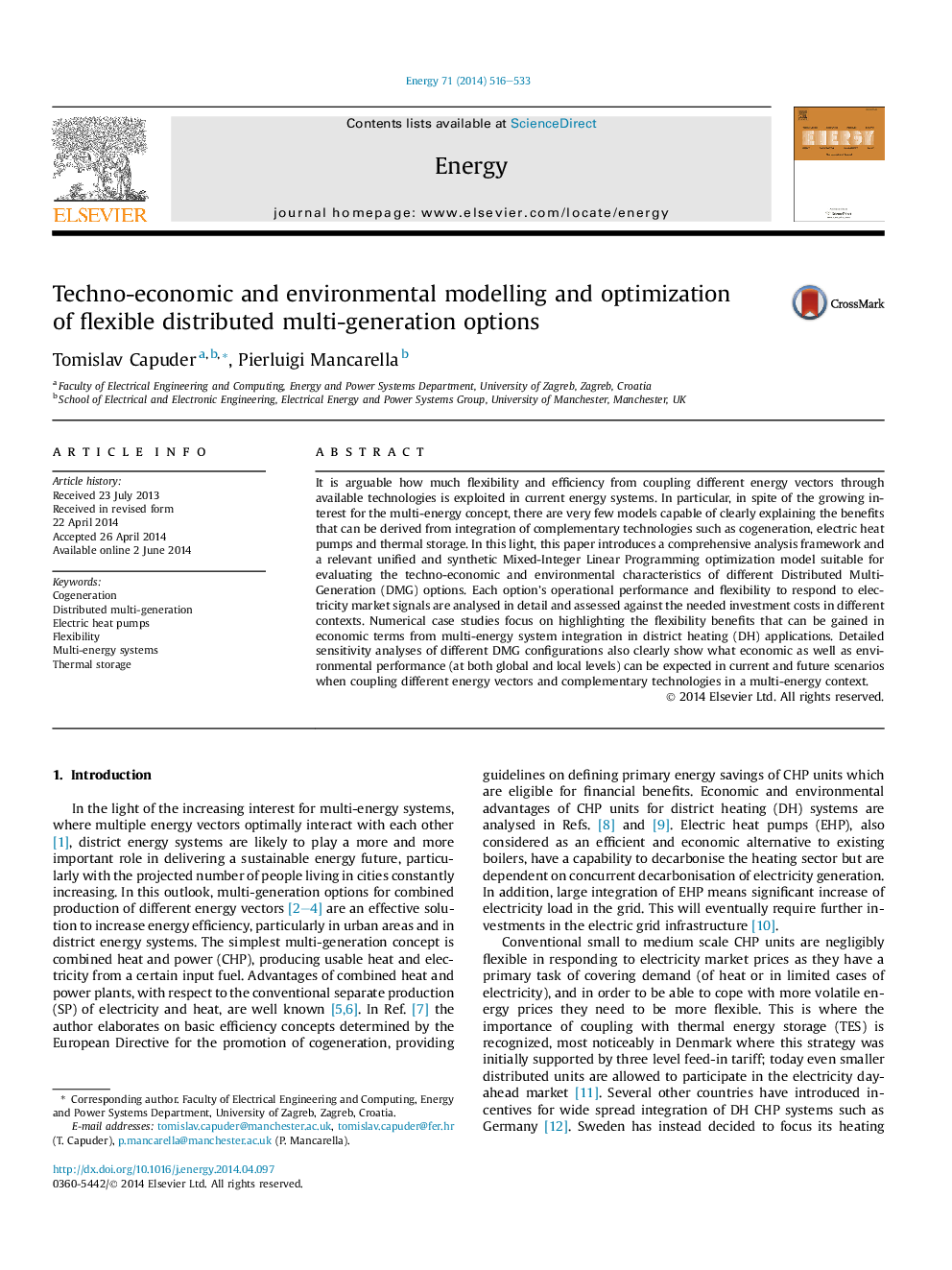| Article ID | Journal | Published Year | Pages | File Type |
|---|---|---|---|---|
| 1732412 | Energy | 2014 | 18 Pages |
Abstract
It is arguable how much flexibility and efficiency from coupling different energy vectors through available technologies is exploited in current energy systems. In particular, in spite of the growing interest for the multi-energy concept, there are very few models capable of clearly explaining the benefits that can be derived from integration of complementary technologies such as cogeneration, electric heat pumps and thermal storage. In this light, this paper introduces a comprehensive analysis framework and a relevant unified and synthetic Mixed-Integer Linear Programming optimization model suitable for evaluating the techno-economic and environmental characteristics of different Distributed Multi-Generation (DMG) options. Each option's operational performance and flexibility to respond to electricity market signals are analysed in detail and assessed against the needed investment costs in different contexts. Numerical case studies focus on highlighting the flexibility benefits that can be gained in economic terms from multi-energy system integration in district heating (DH) applications. Detailed sensitivity analyses of different DMG configurations also clearly show what economic as well as environmental performance (at both global and local levels) can be expected in current and future scenarios when coupling different energy vectors and complementary technologies in a multi-energy context.
Related Topics
Physical Sciences and Engineering
Energy
Energy (General)
Authors
Tomislav Capuder, Pierluigi Mancarella,
